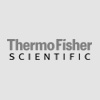Human Herpesvirus 8
KSHV is a herpesvirus, and is a large double-stranded DNA virus with a protein covering that packages its nucleic acids, called the capsid, which is then surrounded by an amorphous protein layer called the tegument, and finally enclosed in a lipid envelope derived in part from the cell membrane.
KSHV has a genome which is approximately 165,000 nucleic acid bases in length. It is a rhadinovirus, and is remarkable since it has stolen numerous genes from host cells including genes that encode for complement-binding protein, IL-6, BCL-2, cyclin-D, aG protein-coupled receptor, interferon regulatory factor and Flice inhibitory protein (FLIP), as well as DNA synthesis proteins including dihydrofolate reductase, thymidine kinase,thymidylate synthetase, DNA polymerase and many others. While no other human tumor virus possesses these same genes, other tumor viruses target the same cellular pathways illustrating that at a basic level, all tumor viruses appear to attack the same cellular control pathways, so-called tumor suppressor pathways.
After infection, the virus enters into lymphocytes via macropinosomes where it remains in a latent ("quiet") state expressing the viral latency-associated nuclear antigen, LANA. The virus exists as a naked circular piece of DNA called an episome and uses the cellular replication machinery to replicate itself. LANA tethers the viral DNA to cellular chromosomes, inhibits p53 and retinoblastoma protein and suppresses viral genes needed for full virus production and assembly ("lytic replication"). Various signals such as inflammation may provoke the virus to enter into lytic replication. When this occurs, the viral episome starts replicating itself in the form of linear DNA molecules that are packaged into virus particles which are expelled from the cell, to infect new cells or to be transmitted to a new host. When the virus enters into lytic replication, thousands of virus particles can be made from a single cell, which usually results in death of the infected cell, hence the term lytic replication.
The viral genome consists of a ~145 kbase long unique region, encoding all of expressed viral genes, which is flanked by ~20-30 kbases of terminal repeat sequences. Each terminal repeat unit is 801 bp in length, has 85% G+C content and is oriented in a repetitive head-to-tail fashion. During latency, the virus genome depends on the host replication machinery and replicates as closed circular episome ("plasmid") using sequences within the terminal repeats as a replication origin. When the virus reactivates into lytic replication, it is believed that the virus genome is replicated as a continuous linear molecule off from an episome (so called rolling circle model). As each unit genome is replicated, it is cut within the terminal repeat region, and then packaged into a virus particle (virion). The virus then becomes enveloped with a lipid membrane as it transits the nucleus and the cytoplasm to exit the cell. Thus, whereas KSHV genome is circular in the nucleus of latently infected cells, it is packaged into infectious viruses as a linear molecule. Once the virus newly infects a cell, the lipid membrane is shed and the virion travels to the nucleus. The viral genome is released where it recircularizes through a poorly understood process that appears to involve homologous recombination.
The primary viral protein responsible for the switch between latent and lytic replication is the ORF50 Replication Transactivation Activator (RTA). When cell signaling conditions activate the generation of RTA, it in turn activates synthesis of a stereotypic cascade of secondary and tertiary viral proteins that ultimately make components of the virus capsid and also the DNA synthesis enzymes required to replicate the virus genome.
Additional information may be found here: http://www.virologyj.com/content/2/1/78
















